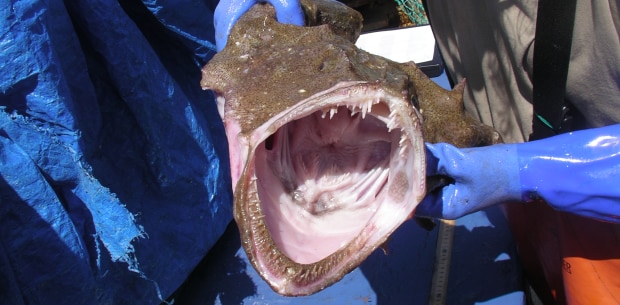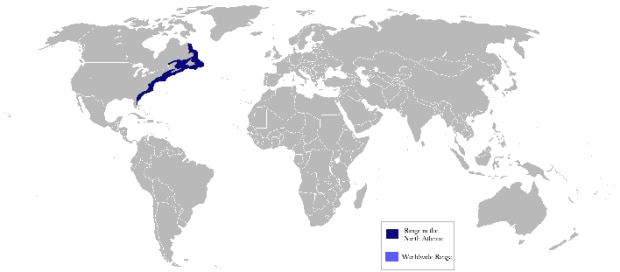Appearance
- Adult monkish are between 2 to 4 feet long and about 50 pounds. They are muddy brown with lighter or darker brown speckles. The belly is paler, even white in some cases.
- Monkfish are not very tall, but large in width, making them look flat. Their head is wide and large, and the mouth faces upward. The eyes are on top of the head. All the monkfish's fins except the dorsal fin are thick and fleshy. Having no scaled, monkfish are slippery and difficult to grab. They get confused with the Mediterranean angler and the Blackbellied angler.
Monkfish facts
- Species name: Lophius americanus
- Monkfish will feed on almost anything that crosses their path. This includes:
- Zooplankton
- Small fish
- Shrimp
- Squid
- Other monkfish
- Crabs
- Lobsters
- Squid
- Octopus
- Seabirds
- Predators include swordfish, sharks, and thorny skates. The larger the monkfish, the less likely it will be eaten.
- Monkfish spawn from February to October. Females can produce more than 1 million eggs by releasing veils that contain the eggs. The veil dissolves after a few weeks and the young are born.
- Monkfish inhabit muddy areas so they can bury themselves for an ambush. They can be spotted close to shore and in shallow waters.
- There is a commercial fishery for monkfish in the United States. Mainly, these fish are harvested through gillnets and trawls. Review the commercial and recreational regulations before hitting the water.
- DMF manages the monkfish species. We follow regulations set by the New England Fishery Management Council.
- Monkfish live in the western North Atlantic, ranging from Newfoundland to North Carolina. Fishermen have also spotted the species along the coast of Barbados and in the Gulf of Mexico.
Angling tips
- Though rarely targeted, there is a fishery for monkfish in Massachusetts. Fishermen often catch them by bottom jigging.
- Fishermen harvest the monkfish for their tail meat, which if firm, dense, and boneless. The meat is similar to a lobster tail. Remove the blue-gray membrane on the monkfish before cooking.
- To learn more about the monkfish, contact Dr. Michael Armstrong at (978) 282-0308 x 109 or michael.armstrong@mass.gov.
Additional Resources
Contact
Online
Fax
(617) 727-3337

